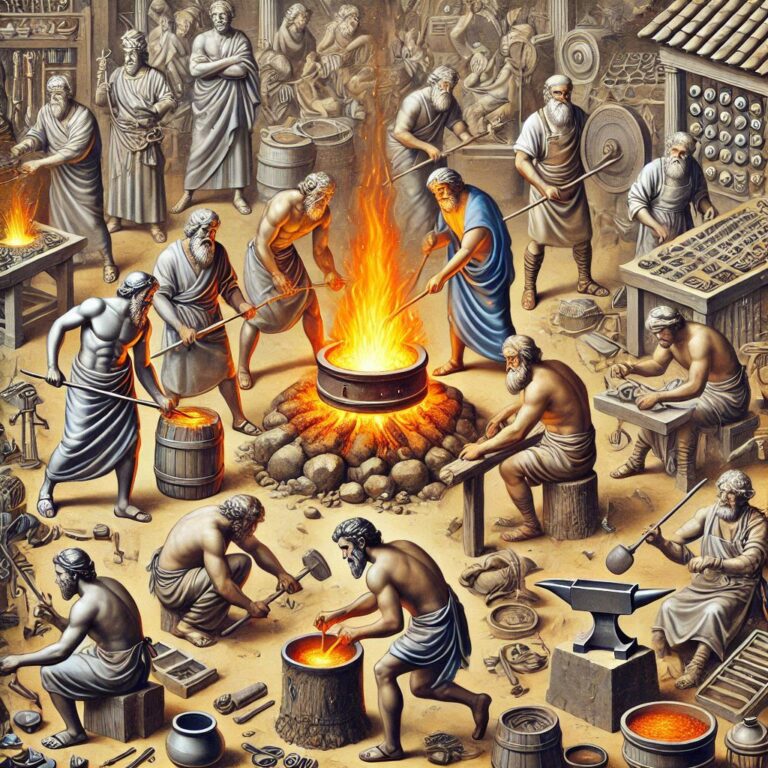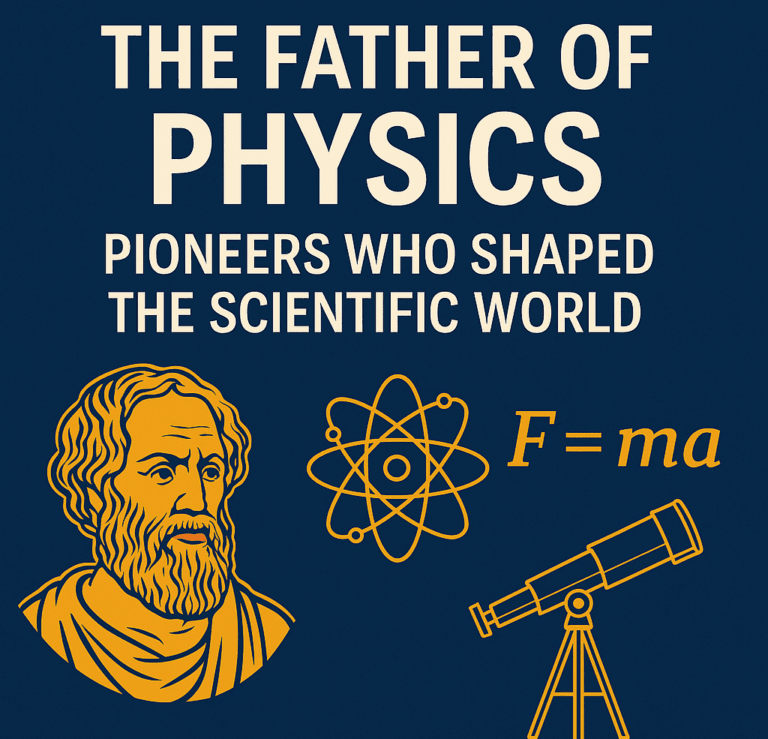Introduction: Advanced Ancient Technologies
Throughout history, humanity has exhibited remarkable ingenuity, crafting tools and systems that defy the limits of their time. While we often associate technological innovation with the modern era, ancient civilizations laid the groundwork for many of today’s advancements. From precision engineering to sustainable solutions, these ancient technologies reflect a deep understanding of science, engineering, and craftsmanship.
What makes these advanced ancient technologies extraordinary is their ability to solve complex problems using limited resources. Many of these ancient inventions remain a mystery, not only for their sophistication but also for their influence on modern innovations. For instance, concepts such as timekeeping, water management, and even computing have their origins in antiquity.
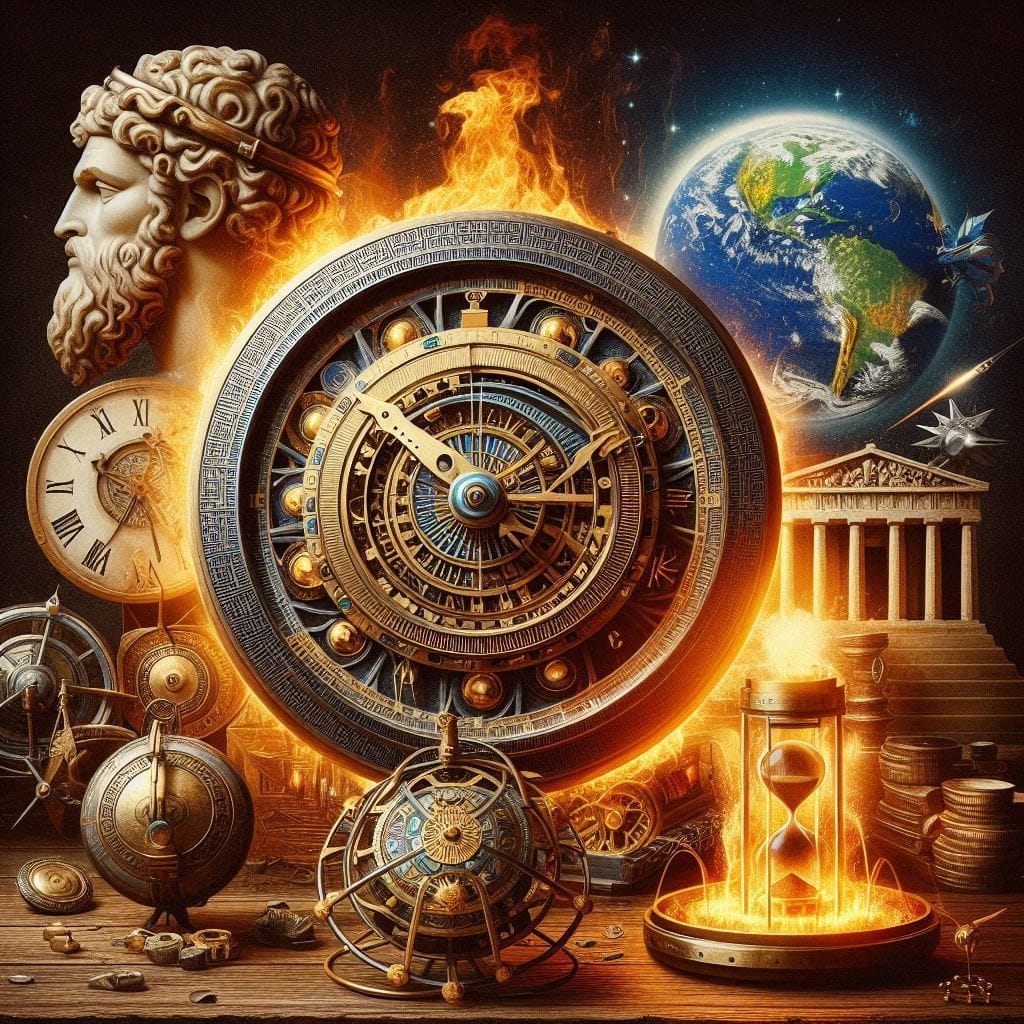
In this article, we’ll explore 10 advanced ancient technologies that were truly ahead of their time. Each of these marvels holds lessons for the modern world, inspiring new possibilities in science, sustainability, and design. Whether it’s the enduring strength of Greek Fire or the intricacies of the Antikythera mechanism, these technologies remind us of the extraordinary potential of human creativity.
The Antikythera Mechanism – The First Analog Computer
The Antikythera mechanism is a testament to the ingenuity of ancient Greek technology. This intricate device has fascinated scientists for decades, discovered in a shipwreck near the Greek island of Antikythera in 1901. It is widely considered the world’s first ancient analog computer, capable of accurately predicting celestial events.
How Did the Antikythera Mechanism Work?
At its core, the mechanism consisted of over 30 bronze gears, meticulously crafted to model the motions of celestial bodies. It could calculate the positions of the sun, moon, and planets, predict lunar eclipses, and even track the cycles of ancient Greek games like the Olympics. The mechanism’s front dial displayed a 365-day calendar, while the back featured complex gearwork to account for the elliptical orbit of the moon—a concept that wasn’t rediscovered until much later in history.
The Antikythera mechanism’s design suggests a deep understanding of astronomy and engineering. Its creators incorporated intricate gear ratios to mimic the uneven speeds of the sun and moon, a feature unmatched in any other ancient device.
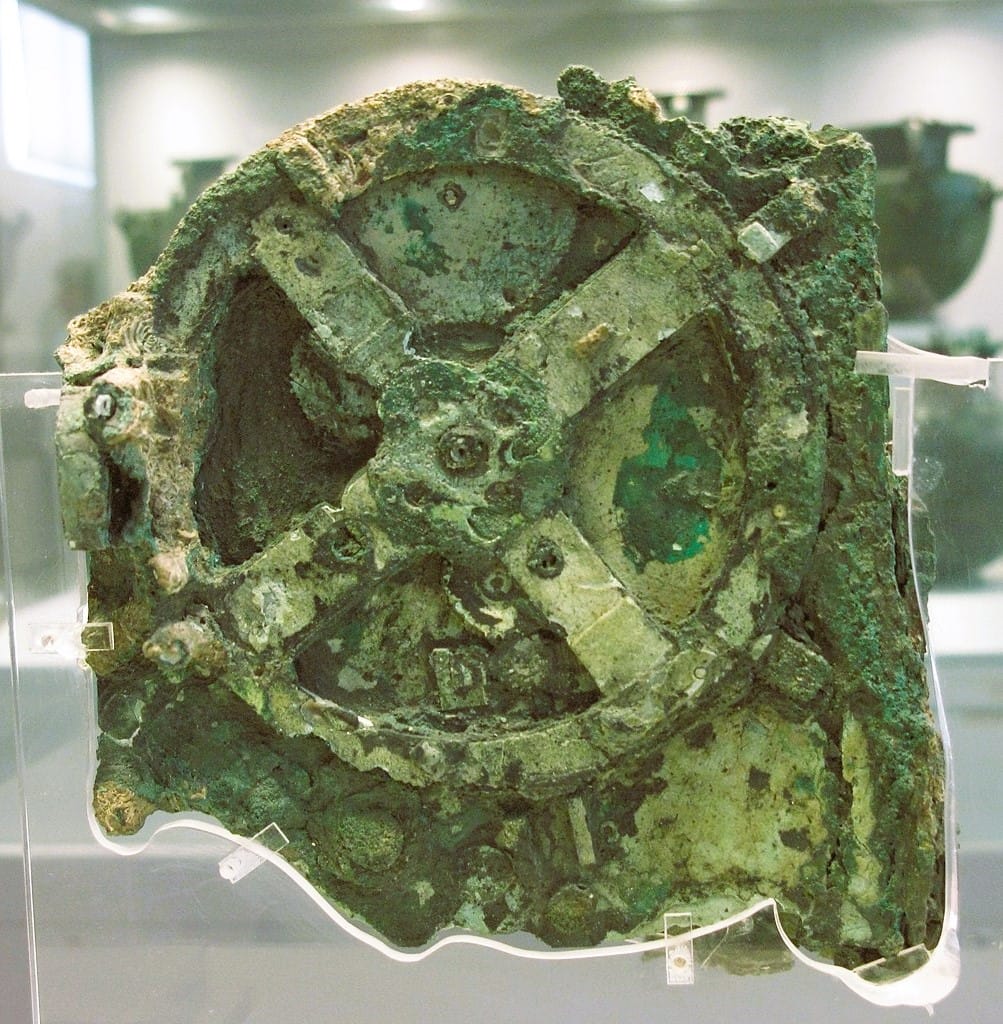
Rediscovery and Research
For decades, the purpose of the Antikythera mechanism remained a mystery due to its corroded state. However, advanced imaging techniques such as X-ray tomography have revealed its inner workings, providing new insights into ancient Greek technology. Researchers now believe that the mechanism was likely crafted around 100 BCE and attributed to a school of thought influenced by renowned mathematicians like Archimedes.
Why It Matters Today
The implications of the Antikythera mechanism are profound. It demonstrates that ancient civilizations possessed not only observational astronomy but also the mechanical skill to translate these observations into functional devices. The knowledge embedded in this ancient analog computer predates similar advancements by more than a millennium, indicating that much of ancient innovation has been lost to history.
Modern Relevance
The principles of the Antikythera mechanism have influenced modern technologies, particularly in the design of mechanical clocks and computational devices. It has also inspired modern engineers and historians to reconsider the technological capabilities of ancient societies, challenging the notion that such innovations began in the Renaissance.
By highlighting the Antikythera mechanism, we recognize how Greek technology laid the foundation for scientific thought and mechanical innovation, making it one of history’s most remarkable ancient inventions.
Greek Fire – The Unstoppable Weapon
The invention of Greek Fire remains one of the most enigmatic and effective military technologies of the ancient world. This incendiary weapon was employed by the Byzantine Empire, particularly in naval warfare, where its impact was legendary. Its ability to burn on water set it apart as a revolutionary ancient naval technology, striking fear into the hearts of enemies.
The Mystery of Its Composition
The exact formula of Greek Fire remains a mystery to this day, as the Byzantines zealously guarded its composition. Historical accounts suggest it might have contained a mixture of petroleum, sulfur, and quicklime. When exposed to water, the quicklime likely reacted violently, ensuring the flames persisted even in aquatic environments. This ability made it indispensable for Byzantine ships to defend their empire, especially against fleets of the advancing Arab forces.

Unlike other incendiary weapons of the time, Greek Fire was deployed using pressurized siphons mounted on Byzantine ships, an innovation in itself. These siphons could spray the flaming liquid onto enemy vessels, often causing immediate destruction.
How Greek Fire Functioned
Greek Fire was more than a weapon—it was a psychological tool of warfare. Eyewitness accounts describe its devastating effects: the liquid fire would cling to surfaces, resist extinguishing, and cause chaos among enemy forces. Its use was not limited to naval engagements; it was also deployed in handheld projectors and clay pots, similar to grenades.
Byzantine engineers were highly skilled in controlling the substance. Specialized ships, known as dromons, were equipped with Greek Fire projectors. These vessels formed the backbone of the Byzantine navy, turning the tide in critical battles, such as the defense of Constantinople in the 7th and 8th centuries.
Modern Comparisons
The principles behind Greek Fire can be seen in modern chemical warfare, particularly in the development of incendiary weapons like napalm. Its resilience in water and destructive power make it an early precursor to contemporary military technologies that prioritize precision and psychological impact.
Lessons from Greek Fire
Despite its effectiveness, Greek Fire was not without limitations. It required skilled operators, and mishandling could lead to catastrophic accidents. The loss of its formula highlights the transient nature of technological advancements and serves as a reminder of the importance of documentation and preservation.
Legacy in Naval Technology
While Greek Fire remains shrouded in mystery, it underscores the Byzantine Empire’s ingenuity and adaptability in warfare. It also illustrates how ancient naval technology influenced modern military strategies, leaving a legacy that continues to be studied and admired.
Sundial Clocks – Ancient Timekeeping Technology (India)
The sundial is one of the oldest timekeeping devices, and its use in ancient India played a crucial role in both astronomy and everyday life Sundial clocks operate by tracking the sun’s movement and the changing position of its shadow. This ancient method of timekeeping dates back thousands of years, with the earliest examples found in Indian civilization as far back as the Vedic period, around 1500 BCE. However, it is during the classical period that we see the widespread adoption and refinement of sundials as instruments of precision timekeeping.
In India, the Jantar Mantar observatories, built by Maharaja Jai Singh II in the 18th century, are some of the most famous examples of advanced timekeeping and astronomical technology. The Samrat Yantra at Jantar Mantar in Jaipur is one of the largest sundials in the world, capable of measuring time with an impressive accuracy of just two seconds. This structure is made of stone and is a monumental testament to ancient Indian understanding of astronomy and time measurement.
The ancient Indians had an incredible grasp of celestial movements, and the sundials they developed were often incorporated into their temples, palaces, and scientific institutions, reflecting their deep interest in understanding the cosmic order. Sundials were not only used for practical purposes, such as daily timekeeping and regulating religious rituals, but also for astronomical observations. Their alignment with celestial events allowed scholars to track the movement of the sun, moon, and stars, contributing to the development of early astronomical charts and calendars.
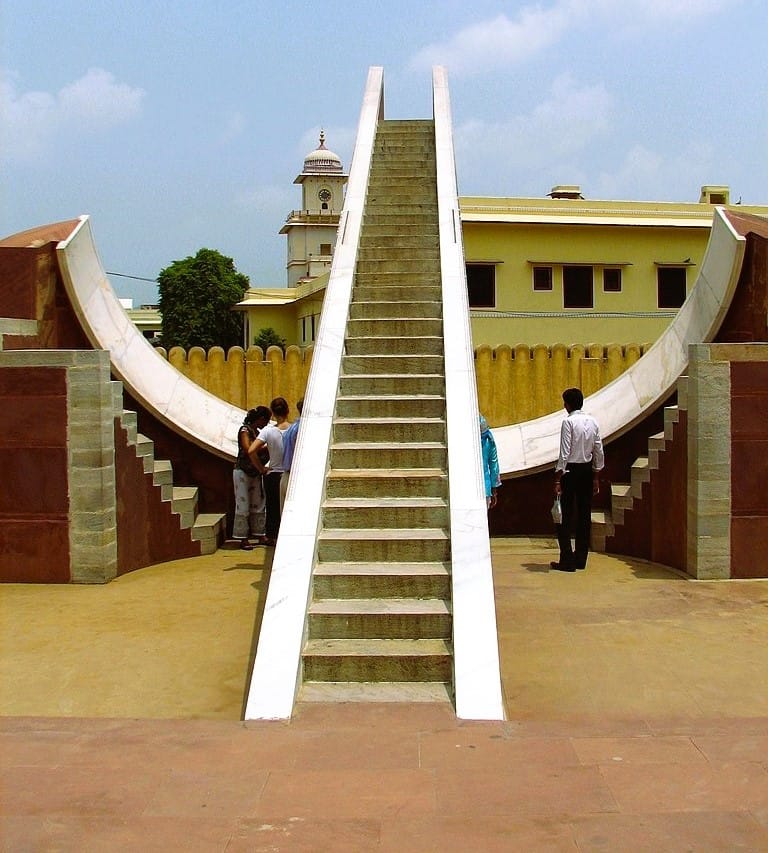
While the sundial was an essential timekeeping device in India, it also had philosophical and symbolic importance. In Indian philosophy, time is often seen as cyclical, and the sundial, with its constant movement and reliance on the sun, symbolized the ever-changing nature of life. Today, sundials are often used as historical artifacts or decorative pieces, yet their legacy remains significant in understanding how ancient Indian technologies influenced not only timekeeping but also the broader scientific fields of astronomy and astrophysics.
The First Calendar System: Ancient Civilizations and Their Astronomical Foundations
The development of calendar systems was crucial for early human societies to track time, organize agricultural cycles, and plan religious rituals. Ancient civilizations, such as the Egyptians and the Sumerians, were pioneers in creating early calendar systems based on astronomical observations, which laid the foundation for the timekeeping methods we use today.
The Egyptian Calendar: The Birth of Solar Timekeeping
One of the earliest known calendar systems was developed in ancient Egypt around 4,000 BCE. The Egyptians created a solar calendar based on the annual cycle of the sun. They structured the year into 12 months, each containing 30 days, and added 5 extra days at the end of the year to align with the 365-day solar cycle. This calendar was primarily used for agricultural purposes, aligning with the Nile River’s flooding cycle, which was critical for planting and harvesting crops. The Egyptians were able to determine the length of the year by observing the heliacal rising of Sirius, the brightest star in the night sky, which coincided with the annual flooding of the Nile. This early system of solar timekeeping laid the groundwork for later civilizations’ understanding of the solar year.
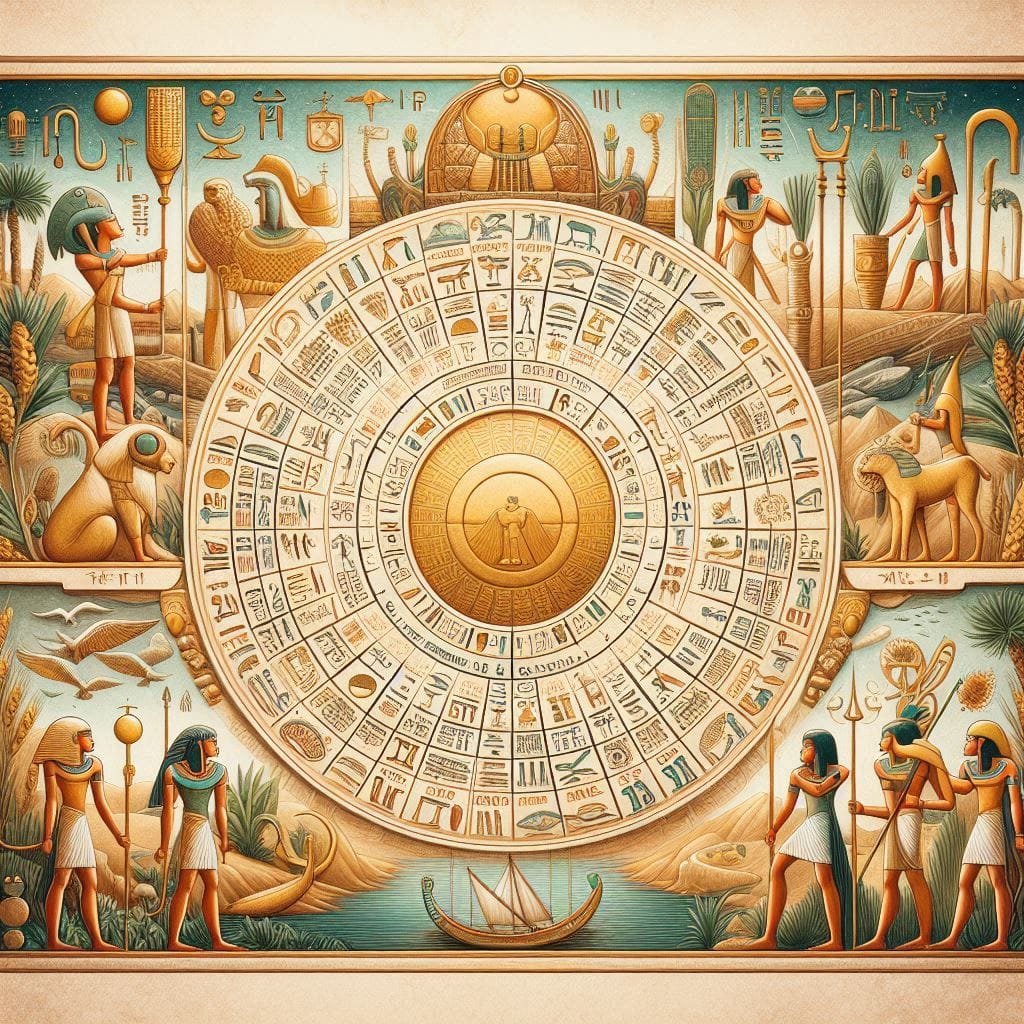
The Sumerian Calendar: A Combination of Lunar and Solar Cycles
Simultaneously, the Sumerians (circa 3000 BCE) developed a lunar-based calendar that divided the year into 12 months, each consisting of 29 or 30 days based on the moon’s cycles. This calendar was closely tied to the phases of the moon, and the months were named after major celestial bodies and events.
However, the Sumerians, like the Egyptians, faced the challenge of reconciling the lunar year, which is roughly 354 days, with the actual solar year of about 365.25 days. To solve this, they occasionally inserted a 13th month to align their calendar with the solar year, creating the practice of intercalation (adding extra months). This system of structuring the year influenced the development of both the Babylonian and Hebrew calendars.
Influence on Modern Timekeeping
Both the Egyptian and Sumerian calendars were among the first attempts to organize time systematically, influenced by astronomical phenomena like the sun’s movement and the moon’s phases. These early systems not only helped organize agriculture and religious events but also influenced modern timekeeping.
The Egyptians’ solar calendar, in particular, played a significant role in shaping the Julian calendar (introduced by Julius Caesar in 45 BCE) and its successor, the Gregorian calendar, which we use today. Meanwhile, the Sumerian lunar calendar influenced the development of the lunar-based calendars of various cultures, including those of China and Islam.
Both the Egyptian and Sumerian calendar systems are among the earliest examples of how ancient astronomical observations were used to create timekeeping methods that are still influential in our modern understanding of the year. The need to track time for agriculture, religious purposes, and governance led to the creation of sophisticated methods of measurement that laid the foundation for many of the time systems we use today. These early ancient tech innovations, driven by the study of the heavens, have helped shape not only our understanding of time but also our relationship with the natural world.
The Lycurgus Cup – Ancient Nanotechnology
The Lycurgus Cup stands as a testament to the ingenuity of ancient tech and the depth of scientific knowledge possessed by Roman artisans. Dating back to the 4th century CE, this chalice is one of the most compelling examples of advanced ancient technologies that continue to baffle modern scientists.
What Makes the Lycurgus Cup Unique?
At first glance, the Lycurgus Cup appears to be an intricately designed piece of Roman glassware. However, its true marvel lies in its color-changing properties. When lit from the front, the cup glows a vivid green, while backlighting transforms it into a rich crimson. This phenomenon is caused by the integration of nanoscale particles of gold and silver into the glass matrix. These nanoparticles, measuring less than 100 nanometers, manipulate light through a process called surface plasmon resonance.
While ancient Romans may not have understood the precise scientific principles behind their creation, their experimentation with materials demonstrates a surprising mastery of ancient nanotechnology. This is a striking example of how advanced ancient technologies could achieve effects that were only scientifically explained millennia later.
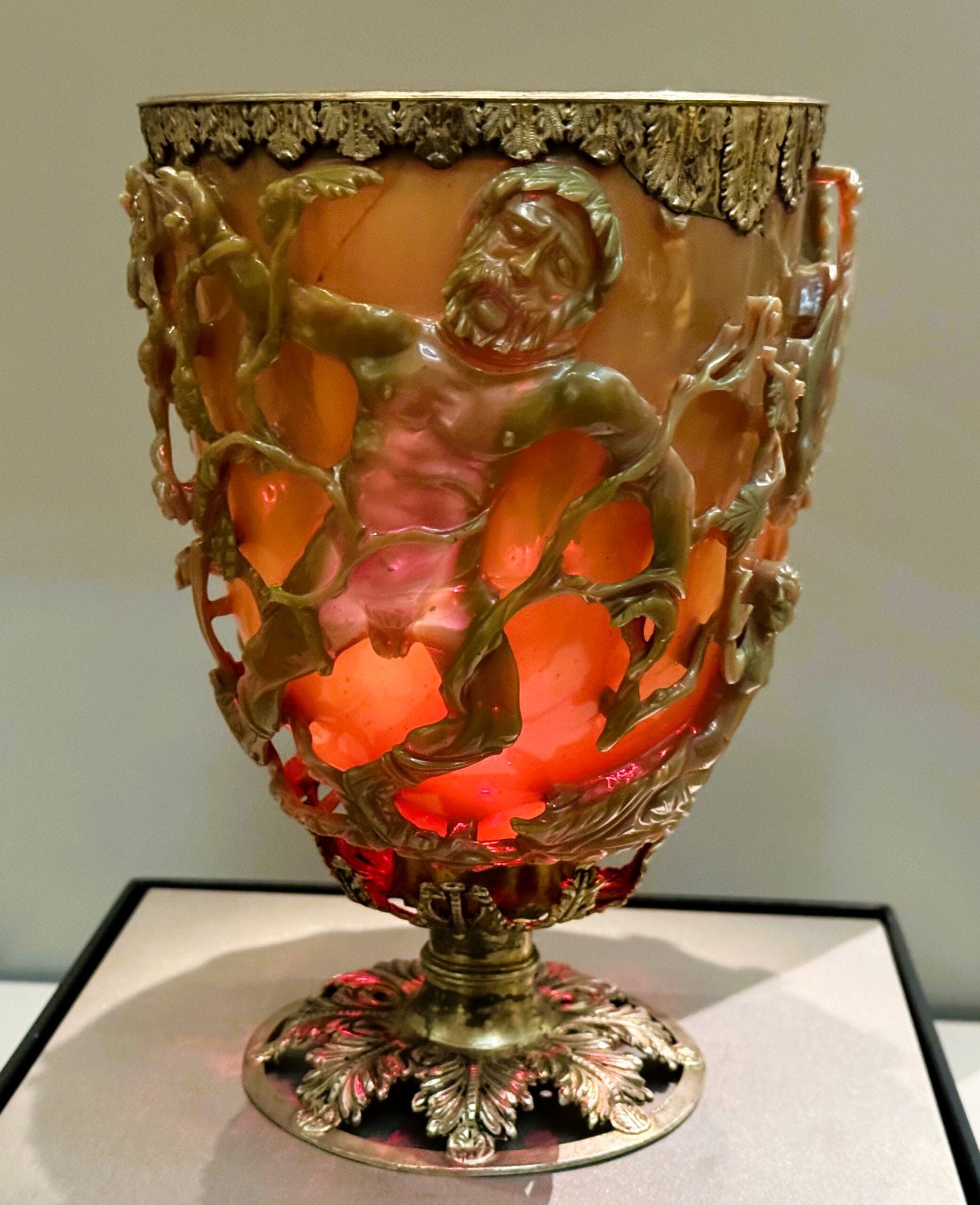
Symbolism and Design
The Lycurgus Cup depicts a mythological scene involving King Lycurgus, who was punished by Dionysus for his opposition to the god of wine. The intricate relief and craftsmanship suggest the cup was not just a functional item but a ceremonial object with cultural and symbolic significance. Its design reflects a deep understanding of aesthetics and storytelling, blending artistry with the scientific manipulation of materials.
Impact on Modern Science
The rediscovery of this ancient artifact has provided valuable insights for modern material science. The same principles used in the Lycurgus Cup are now applied in:
- Biosensors: Devices capable of detecting specific biological molecules.
- Optical Filters: Used in photography and advanced imaging.
- Cancer Treatments: Techniques that rely on nanoparticles to target and destroy cancer cells.
The Lycurgus Cup exemplifies how ancient civilizations explored and applied early forms of nanotechnology. It inspires today’s scientists to re-examine ancient tech for solutions to modern challenges, demonstrating how knowledge from the past can pave the way for future breakthroughs.
The Qanats – An Ingenious Ancient Water Management System
The Qanats were an ancient water management system developed around 3,000 years ago, primarily in Persia (modern-day Iran). This advanced technique enabled civilizations in arid regions to transport water efficiently from underground aquifers to the surface without the need for mechanical pumps. These systems used gravity to bring water over long distances, ensuring a steady supply for drinking, irrigation, and urban development.
Key Points
- Structure and Design:
A qanat is an ancient irrigation system consisting of a series of vertical shafts that are connected by a gently sloping underground tunnel, designed to transport water from an aquifer to the surface. The gradient of the tunnel was meticulously calculated to maintain the natural flow of water without causing flooding or stagnation.- Vertical Shafts: These served as access points for maintenance and ventilation.
- Horizontal Tunnels: These carried water from the source to agricultural fields or urban centers.
- Engineering Ingenuity:
The construction required precise knowledge of geology and hydrology. Workers, known as muqannis, would manually dig these channels, often working under hazardous conditions to ensure accuracy in slope and direction. - Sustainability:
Unlike surface canals, Qanats minimized water evaporation, making them ideal for regions with high temperatures. This sustainability aspect makes them a remarkable example of advanced ancient technologies designed with environmental constraints in mind.

Modern Relevance
- The Qanat system is still operational in several parts of the world, including Iran, Afghanistan, and North Africa.
- Researchers are studying these systems as a sustainable solution to modern water scarcity problems, particularly in arid regions.
- They inspire modern water-harvesting techniques, highlighting the value of ancient tech in addressing contemporary challenges.
Historical Impact
The spread of Qanats across the ancient world influenced water management in regions such as the Arabian Peninsula, North Africa, and Spain. These systems significantly contributed to the prosperity of civilizations by ensuring reliable access to water, even in challenging terrains.
The Roman Hypocaust – Early Central Heating System
The Roman Hypocaust system is one of the most ingenious ancient technologies that remains surprisingly relevant in the context of modern engineering. This ancient heating technology was a central heating system used in Roman baths, villas, and other public buildings, providing warm air through underfloor heating. It exemplifies the Romans’ advanced understanding of heat distribution, which laid the groundwork for modern HVAC systems and other heating technologies.
Structure and Function of the Roman Hypocaust
The Roman Hypocaust operated by circulating hot air under floors raised on pillars (called pilae stacks) and through hollow spaces in walls. A furnace, typically fueled by wood, would heat the air, which would then flow through these channels and warm the building. The system was especially popular in the Roman baths, where it created an ambient warmth that could be controlled by adjusting the size of the furnace or the ventilation paths.
- Pillars and Floors: The system was designed to elevate the floor slightly, creating a space beneath where heated air could flow. This allowed for efficient heating, especially in large, stone structures where maintaining a stable internal temperature was a challenge.
- Furnaces and Chimneys: The furnace, or praefurnium, would burn fuel (wood or charcoal) to create hot air. The hot gases would then travel through flues, warming both the floors and the walls.
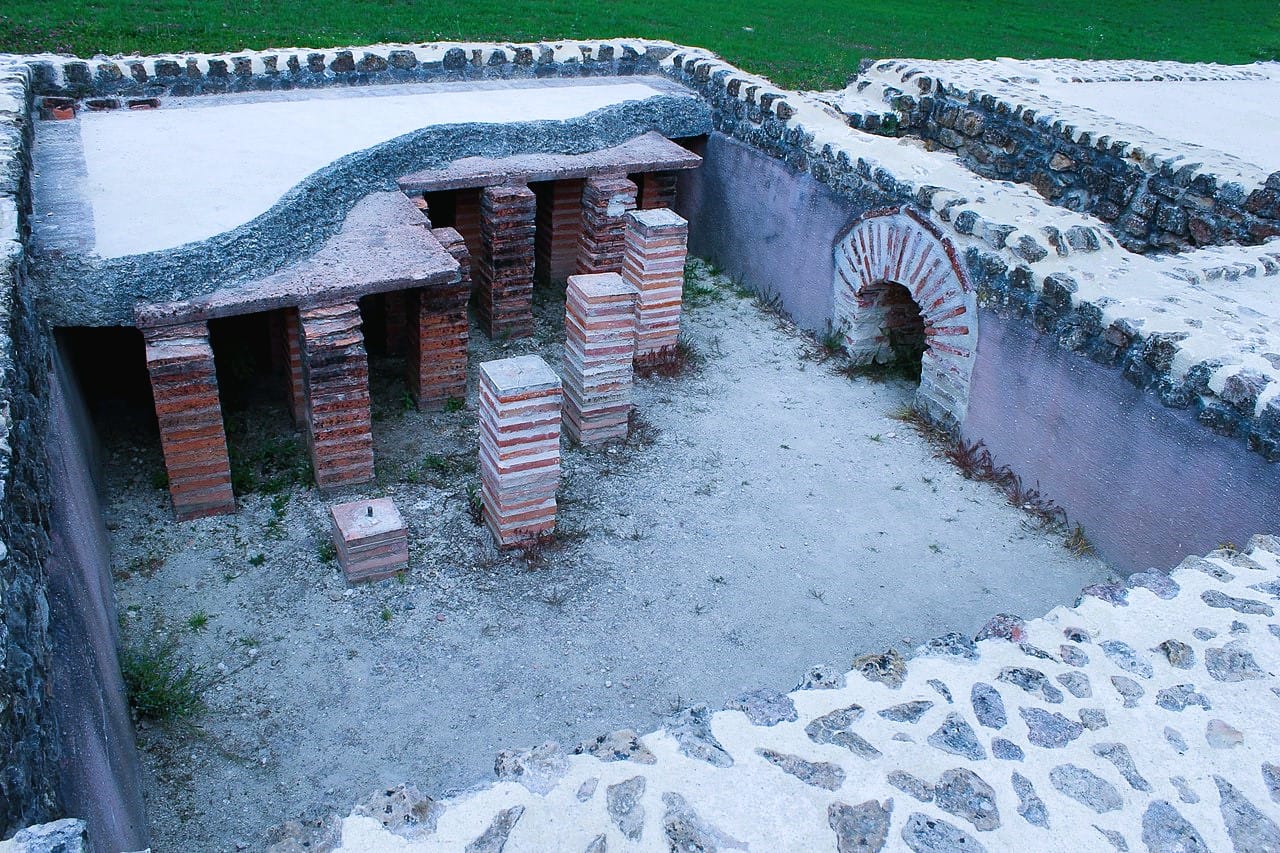
Key Points:
- Innovation in Ancient Heating: The Roman hypocaust is often considered the precursor to modern central heating systems. By allowing heat to spread evenly throughout a space, the Romans were able to create a comfortable indoor environment during cold weather.
- Cultural and Functional Significance: The hypocaust system was more than just a luxury; it was essential for maintaining public health and hygiene in Roman bathhouses, which were central to Roman social life. The system enabled a stable and comfortable environment for bathing, and it also promoted good sanitation by keeping bathhouse floors dry and warm.
- Wide Reach: Over time, this system became widespread, used not only in bathhouses but also in villas and palaces, showing its potential for widespread application in Roman engineering.
Historical Impact:
The Roman hypocaust system is a sophisticated example of ancient engineering used for heating buildings through a network of underground ducts and furnaces. Its underlying principles were based on heat exchange and airflow, which are foundational concepts in modern mechanical engineering. The system demonstrates how the Romans used technology to improve their daily lives, providing the groundwork for innovations in heating systems used today.
Much like other ancient tech innovations, the hypocaust underscores the Romans’ forward-thinking approach to practical problems. Its legacy can still be seen in modern floor heating systems, such as those used in modern buildings and luxury homes. In a way, the hypocaust was a precursor to modern underfloor heating, which has become an energy-efficient and popular choice for home heating today.
Modern Relevance:
The Roman hypocaust system continues to influence modern engineering, particularly in the field of advanced ancient technologies. Today, we see innovations that mirror the hypocaust, such as radiant floor heating systems that use warm water or electric cables to heat floors. These systems are highly efficient, reducing the energy required to heat a room and improving comfort.
By studying the hypocaust, modern engineers gain insights into early principles of heating and ventilation, which are still relevant in building design and climate control. The ancient technology of the hypocaust system serves as a reminder of the timelessness of innovation and how ancient tech can inspire and inform contemporary engineering solutions.
Ancient Indian Plastic Surgery (India)
Ancient India’s contributions to the field of plastic surgery were groundbreaking and have had a lasting influence on modern surgical practices. The practice of surgical procedures for aesthetic and medical purposes dates back to around 600 BCE, with the work of Sushruta, often referred to as the “father of surgery.” Sushruta’s extensive treatise, the Sushruta Samhita, is considered one of the earliest texts dedicated to surgery and medicine. In it, Sushruta detailed over 300 surgical procedures and described more than 120 surgical instruments that were used in ancient Indian medical practice.
One of the most well-known procedures recorded in the Sushruta Samhita is rhinoplasty, the reconstruction of the nose. This procedure was particularly significant in ancient India due to societal norms and the practice of punishing criminals by cutting off their noses. The process involved careful techniques using skin grafts, specifically taking skin from the forehead or cheeks to reconstruct the nose. This autograft method, which uses tissue from the same individual, is still widely used in modern reconstructive surgery today. The intricate and detailed nature of these surgeries required a deep understanding of human anatomy, particularly the blood vessels and nerves involved in the reconstruction.
Additionally, Sushruta’s work extended to other forms of reconstructive surgery, such as ocular surgery, which included the removal of cataracts and the early techniques of plastic surgery. His approach to sterilization techniques, such as the use of medicinal herbs to clean wounds and prevent infection, was revolutionary for the time. Ancient Indian surgeons were also skilled in orthopedic surgery, performing surgeries to treat bone fractures and dislocations with tools that mirrored the precision of modern instruments.
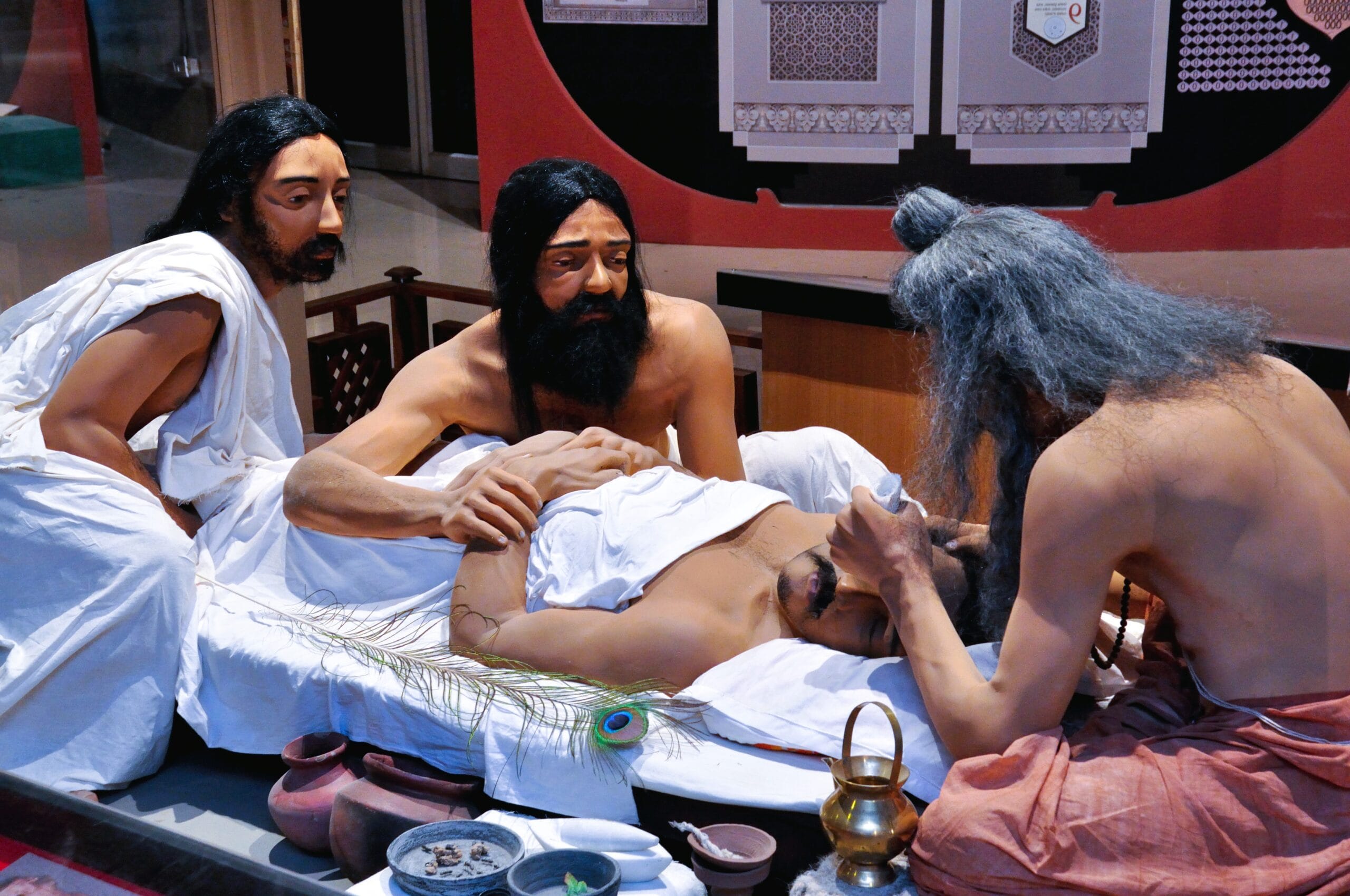
The influence of ancient Indian medical techniques spread throughout the world, particularly to Greece and the Islamic world, where Sushruta’s work influenced figures like Hippocrates and Avicenna. This cross-cultural exchange of knowledge paved the way for further advancements in surgical practices across the globe. The concepts of reconstructive surgery in India were not only ahead of their time but became foundational to the development of modern cosmetic surgery, making ancient Indian plastic surgery a significant milestone in the history of medicine.
The Zero – A Revolutionary Concept (India)
The invention of zero is one of the most profound contributions from ancient India to the world. Long before the rest of the world began using zero as a mathematical tool, ancient Indian mathematicians recognized its power and potential. This monumental discovery can be traced back to the 5th century CE when Indian scholars like Aryabhata and Brahmagupta formalized the use of zero in the decimal number system.
In the earlier number systems, the absence of a quantity was often indicated by leaving a space, but this system lacked a symbolic representation for “nothing.” The development of zero, both as a concept and a number, revolutionized the entire structure of mathematics. In Brahmagupta’s Brahmasphutasiddhanta (628 CE), he explicitly described zero as a number, not just a placeholder. He also laid the groundwork for its arithmetic operations, such as how zero could be added, subtracted, and multiplied, thus establishing the foundation for modern algebra and arithmetic.

The Indian concept of zero made possible the development of place-value notation, which allowed for the concise representation of large numbers. This mathematical innovation was essential for the development of more complex calculations, including those in astronomy, engineering, and commerce. The Indian numeral system, including zero, was introduced to the Islamic world, where scholars such as Al-Khwarizmi expanded upon it. Later, during the Medieval period, the knowledge of zero reached Europe, primarily through the Fibonacci sequence and his book Liber Abaci.
The widespread use of zero and the decimal system also spurred the growth of algebra and calculus, areas of mathematics that were fundamental in the development of modern science and technology. Today, zero remains a cornerstone of all branches of mathematics, including computer science, where it is integral to the binary code system used in digital computing. The concept of zero exemplifies how advanced ancient technologies like this continue to shape our world, laying the foundation for much of modern science.
Conclusion: The Enduring Legacy of Ancient Innovations
The ancient world was not only defined by grand empires and monumental events but also by the remarkable technological achievements that have shaped our modern lives in unexpected ways. From the intricate Antikythera Mechanism, which functioned as the world’s first analog computer, to the mysterious yet unstoppable Greek Fire, these innovations reveal the incredible ingenuity of ancient civilizations.
The Sundial Clocks and the First Calendar Systems laid the foundation for how we understand time, influencing everything from agricultural cycles to the modern digital clocks we use today. Ancient Indian contributions, such as Plastic Surgery and the mathematical concept of Zero, were revolutionary, transforming not only medical and scientific practices but also setting the stage for future breakthroughs in technology and mathematics.
The Lycurgus Cup, an example of ancient nanotechnology, showed that even in antiquity, humans were capable of manipulating materials at the microscopic level—an early precursor to the nanotechnology of the 21st century. Similarly, Qanats, the underground water management systems developed in ancient Persia, highlight the brilliance of early engineering to address environmental challenges, inspiring modern water conservation methods.
The Roman Hypocaust system not only warmed homes but also contributed to our understanding of heating and ventilation technology. Each of these inventions represents a moment of human creativity, demonstrating that advanced ancient technologies were not merely products of their time—they were, in many ways, ahead of their time, influencing everything from architecture and engineering to mathematics and medicine.
These ancient tech innovations remind us that much of modern progress stands on the shoulders of these groundbreaking ideas. As we continue to advance into the future, the wisdom embedded in these ancient inventions provides valuable lessons on sustainability, ingenuity, and the pursuit of knowledge. Their legacy is a testament to the timeless nature of human innovation, and they continue to inspire new generations of thinkers, builders, and creators.
To explore more about these remarkable ancient innovations, check out the following articles:
- Ancient Engineering Marvels: Discover how ancient civilizations achieved impressive feats of engineering that continue to inspire modern techniques.
- Ancient Acoustic Technologies: Delve into the fascinating sound technologies used by ancient cultures to enhance communication and architecture.
- The World’s First Dams: Learn about the early water management systems built by ancient societies to control and store water, laying the foundation for modern infrastructure.
- Ancient Earthworks: Explore the engineering and construction of massive earthworks that served as both functional and ceremonial purposes across different cultures.
- Roman Concrete Invention: Find out how the Romans created concrete that has withstood centuries, influencing modern construction materials.
These linked articles dive deeper into the groundbreaking achievements of ancient civilizations.




